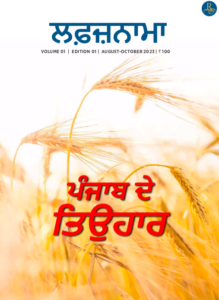THE CURIOUS CASE OF THE WAISTCOAT

Overheard a sassy bit of a conversation between two teenagers at a recent wedding that left me, initially, in peals of laughter and later on pondering on the nuances of lingua franca. The young girl was teasing the pimply youth and the target was a piece of his apparel. “Tune ‘tokri’ pehni hai?” she mocked him. “I’m not!” the boy replied indignantly. “But you just said ‘Maine basket pehni hai’” the girl chirped. Curiosity got the better of me as I turned to look at the young boy who was almost in tears by now. The boy was elegantly dressed up in a smart pair of trousers and a matching ‘waistcoat’. I instantly guessed what the joke was all about as I had been able to resolve this conundrum quite early in my lifetime. My grandfather, who was fond of wearing a waistcoat, always referred to it as ‘waskit’– a distortion of the original English word ‘waistcoat’.
As a language teacher, I do realize that it is not unusual for words to get distorted while they get assimilated from one language to another. It is rather common when two cultures come together. There is not only an exchange of ideas, clothing, and cuisine but also of language. Borrowing is perhaps the commonest and easiest form of vocabulary extension in any language. Colonialism has been a period of much influence and enrichment of languages across the globe. India being the land of diversity is home to more than a dozen languages. During British rule, the natives were exposed to the language of the masters and vice versa. Usually, the words borrowed from one language to another retain the same pronunciation but at times their pronunciation may get distorted owing to the ‘pronunciation limits of the recipient language.’
Names of most places have some background to them. Some are named after local heroes while others are named to mark a historical or mythological event. There are some, however, who owe their origin to the distortion of words. My husband, who works for the Oil and Natural Gas Corporation of India, loves to tell the story behind one such place. During the late 19th century, explorations were being carried out for crude oil and natural gas by the British in India. At one such place in Assam while the excavation was in progress, the British officers frequently ordered the native labor, “Dig boy! Dig boy!” which led to the christening of the place as ‘Digboi’, a distorted version of ‘Dig Boy’.
Similarly, the etymology of the word ‘juggernaut’ can be traced to the Hindu god ‘Jagannath’. The British witnessed the procession where the image of the lord was placed in a giant chariot and pulled with ropes. The legend has it that the devotees used to throw themselves under the giant wheels of the chariot to be crushed. The word ‘juggernaut’, therefore, is an altered and distorted version of the lord’s name and carries a similar meaning– a massive, inexorable force or object that crushes everything that comes in its way.
The stories are endless and yet the message is simple and clear– “It’s all connected. We don’t live in a vacuum.” Let us try to find more connections, more links rather than snapping them and placing things and people inside structured compartments.















